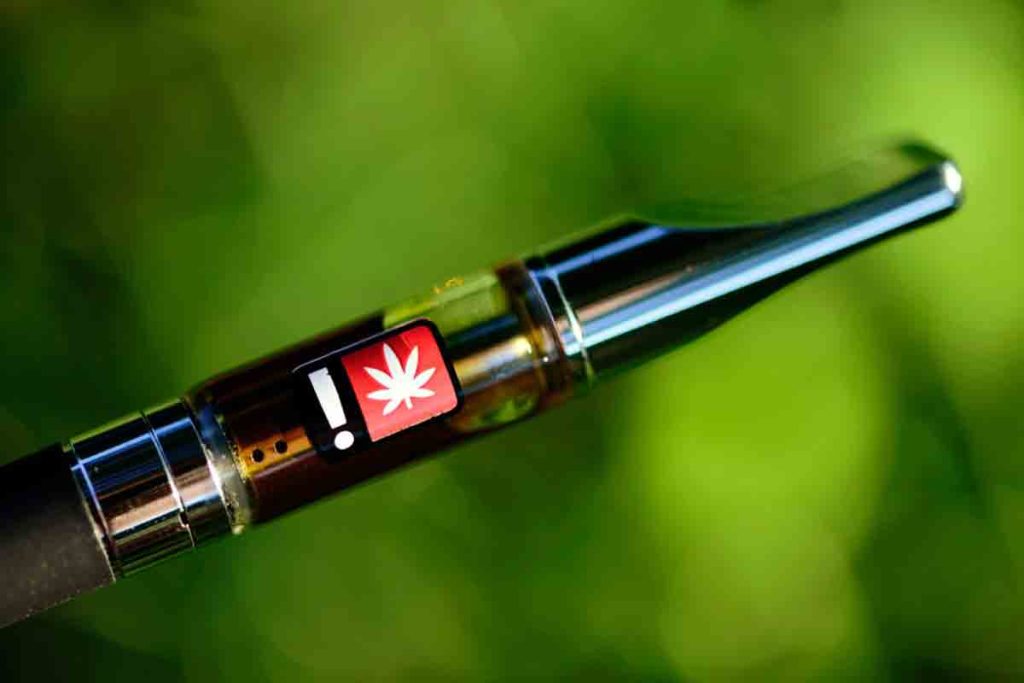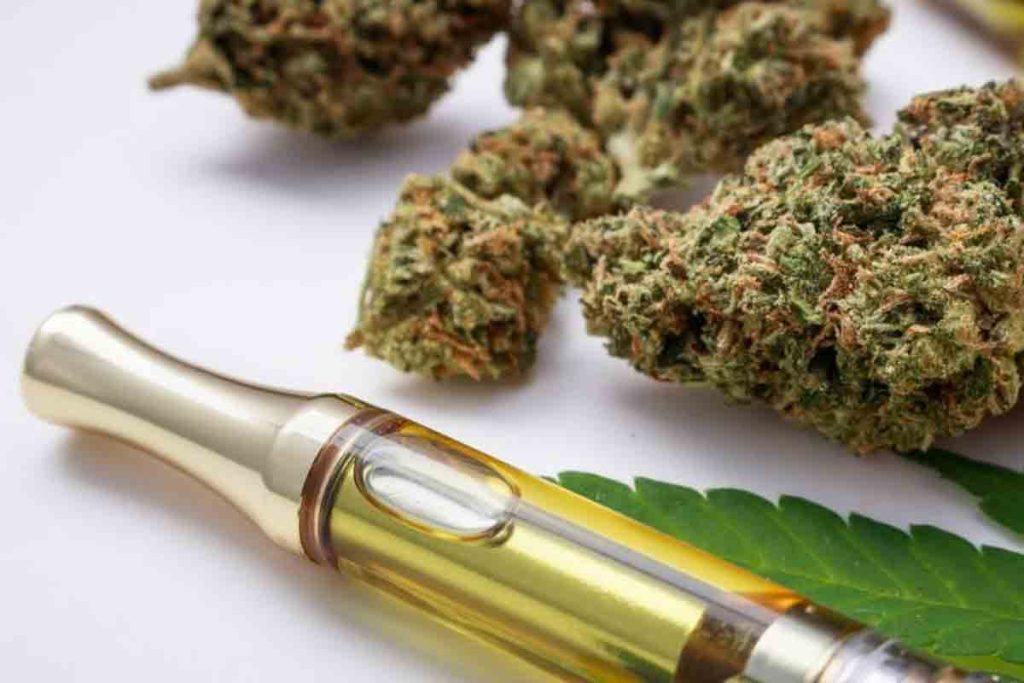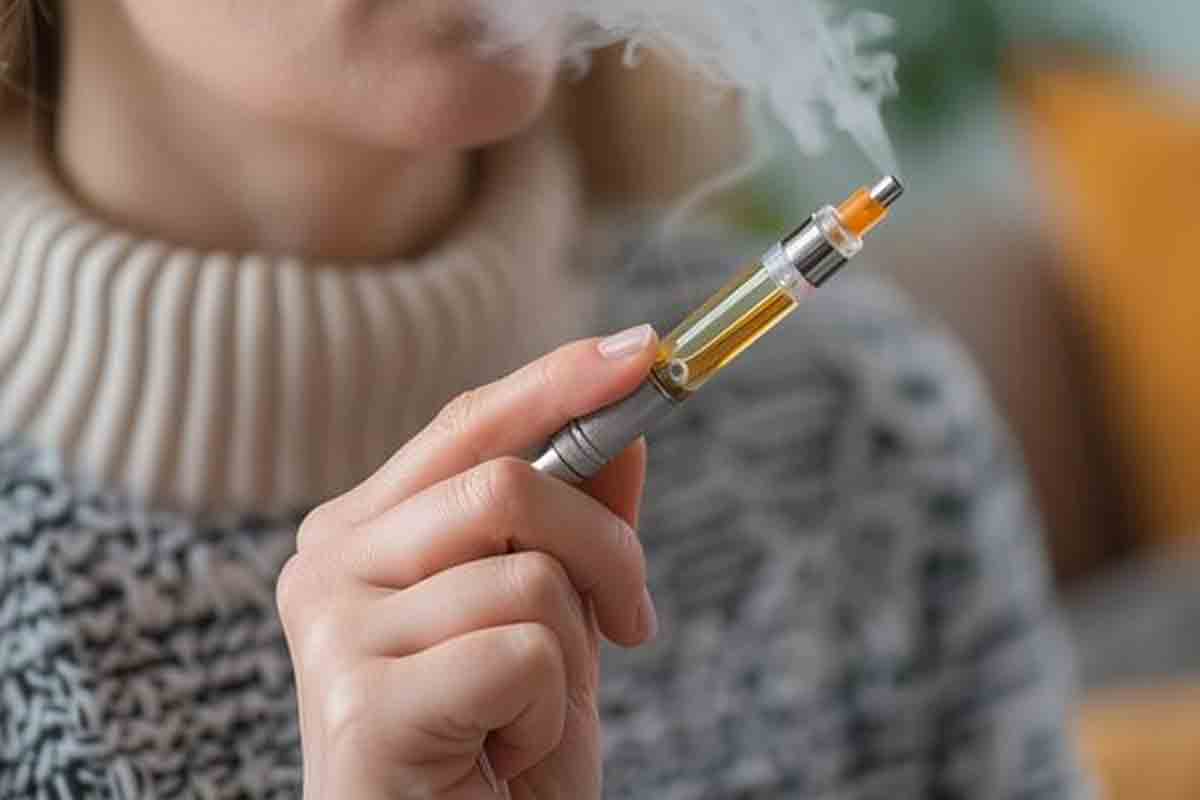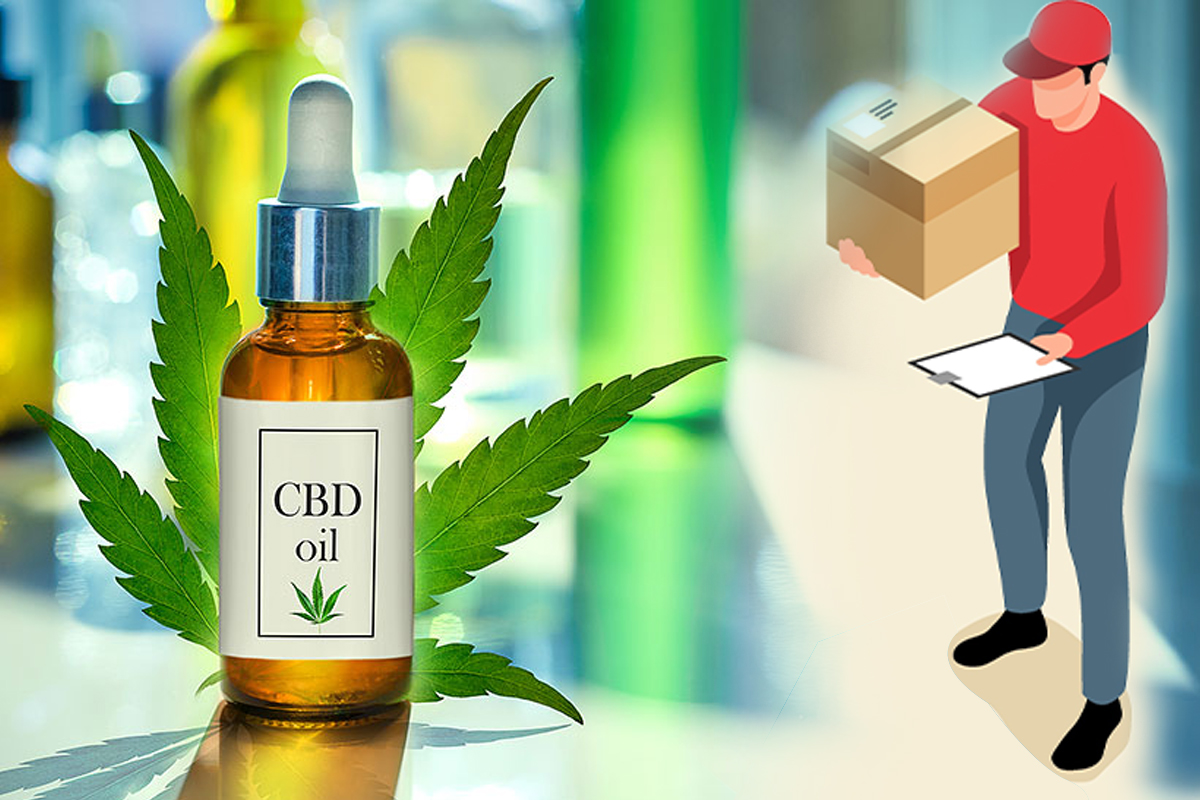What Are the Dangers of THC Vapes? An Authoritative Guide
The rise of THC vaping has coincided with broader cannabis legalization and a surge in innovative consumption methods. Yet while many tout THC vape devices for their discreetness and rapid onset, serious concerns remain regarding their safety. In this comprehensive guide, we explore the dangers of THC vapes—from their impact on lung health and exposure to toxic chemicals to the specific risks for vulnerable populations and device-related hazards. Using authoritative data from sources like the CDC, FDA, and Health Canada, we provide a balanced overview of what users need to know about the risks of THC vaping.
Introduction: What Are the Dangers of THC Vapes?

THC vapes—electronic devices that vaporize cannabis extracts—have rapidly gained popularity in recent years. As cannabis legalization expands, more consumers turn to these products for their convenience and perceived safety compared to smoking. However, despite their “cleaner” appeal, there is mounting evidence that vaping THC carries significant health risks.
Recent investigations by the Centers for Disease Control and Prevention (CDC) have linked vaping-associated lung injury (EVALI) to contaminated THC vape products. Moreover, studies indicate that many THC vape liquids are adulterated with dangerous additives such as vitamin E acetate and heavy metals, which are not present in traditional smoking. These contaminants can lead to acute respiratory distress, long-term lung damage, and even death. In addition, the high potency of many THC concentrates may amplify adverse effects on cognitive function and increase the risk of dependence or withdrawal.
This article examines the various dangers of THC vapes. We begin with an overview of how these devices work and the primary health risks—particularly to the lungs. We then delve into the specific chemical contaminants and toxic exposures associated with THC vaping. Throughout, we emphasize data-backed findings from reputable agencies, ensuring that readers receive an authoritative and balanced perspective on the dangers of THC vapes.
Overview of THC Vapes and Their Usage

THC vape devices include vape pens, cartridges, and dab pens that deliver cannabis extracts by heating them to a temperature below combustion. This controlled heating converts non‑psychoactive THCA into active THC, producing an aerosol that is inhaled. Unlike smoking—which burns the cannabis plant and produces harmful by‑products like tar and carbon monoxide—vaping is often marketed as a “cleaner” method of cannabis consumption.
Despite this claim, the concentrated nature of THC vapes can lead to the inhalation of significantly higher levels of THC. Many illicit products contain unregulated additives and cutting agents that can compromise safety. The popularity of these devices is driven by their portability, ease of use, and discreet design, making them especially appealing to young adults and those seeking a rapid “high.”
However, the rapid rise in THC vaping has outpaced rigorous research into its long-term health impacts. As a result, many users—and even some healthcare providers—may underestimate the potential dangers associated with these devices.
General Health Risks: The Dangers of THC Vapes on Lung Health
One of the most alarming dangers of THC vapes is their impact on lung health. Research has documented cases of vaping-associated lung injury (EVALI), a severe respiratory condition that has resulted in hundreds of hospitalizations and numerous deaths. While vaporizing cannabis is often perceived as safer than smoking due to lower levels of combustion toxins, emerging evidence suggests that high‑potency THC vape products may, in fact, inflict significant lung damage.
The CDC has reported that a high proportion of EVALI cases involve the use of THC-containing vaping products. For example, a study published in the New England Journal of Medicine noted that many patients who developed lung injury had used THC vape cartridges adulterated with vitamin E acetate—a substance now strongly implicated in these injuries. When inhaled, vitamin E acetate can interfere with normal lung functioning by disrupting the surfactant that keeps the air sacs (alveoli) open, leading to inflammation, reduced oxygen exchange, and in severe cases, respiratory failure.
In addition to vitamin E acetate, other harmful chemicals such as heavy metals (which can leach from faulty heating coils) and residual solvents are often found in illicit THC vape products. These toxic substances can induce a range of respiratory symptoms—from chronic cough and wheezing to acute bronchitis and pneumonia. Animal studies have further supported the association between vaping THC and lung injury, demonstrating that exposure to contaminated aerosols results in lung inflammation and cellular damage.
While some data suggest that vaporized cannabis produces fewer carcinogens than combusted cannabis, the risks posed by unregulated additives and high concentrations of THC outweigh any perceived safety benefits. Users may experience rapid onset of symptoms such as shortness of breath, chest pain, and fatigue after just one session of vaping, with repeated use increasing the risk of chronic lung conditions and impaired respiratory function.
Chemical Contaminants and Toxic Exposures in THC Vapes
Beyond the inherent risks of high THC concentrations, chemical contaminants in THC vape products present another major danger. Illicit and unregulated vape cartridges often contain substances that are not intended for inhalation, dramatically increasing toxicity.
Vitamin E Acetate:
A key culprit identified by both the FDA and CDC is vitamin E acetate. Originally used as a thickening agent in vape liquids, this compound is now strongly associated with EVALI. Studies have found vitamin E acetate in nearly all lung fluid samples from affected patients, suggesting it plays a major role in the pathogenesis of lung injury. When heated, vitamin E acetate can produce toxic by‑products, including ketene gas, which is highly corrosive and can damage lung tissue.
Heavy Metals and Solvents:
Faulty or counterfeit THC vape products may also contain heavy metals like lead and cadmium, which can leach from poorly manufactured heating coils. Inhalation of these metals is linked to cellular and DNA damage, raising the long-term risk of cancer. Additionally, residual solvents used during the extraction of THC (such as butane or ethanol) may remain in the vape liquid, further contributing to toxic exposure.
Other Additives:
Flavoring agents and other synthetic additives are often included to enhance the taste and appeal of THC vape liquids. However, when these chemicals are heated, they may decompose to form new compounds—some of which are carcinogenic or cause respiratory irritation. The combination of these contaminants creates a “cocktail effect” that can overwhelm the body’s natural defense mechanisms, leading to acute lung inflammation and, in some cases, long-term damage.
For users, the risk is compounded by the fact that many of these chemicals are present in unregulated products purchased from black-market sources. As a result, consumers may unknowingly inhale a mixture of harmful substances with each puff, significantly increasing their risk of respiratory and systemic toxicity.
Dangers for Vulnerable Populations: Teens, Pregnant Women, and Chronic Users
Certain populations are particularly at risk from the dangers of THC vapes. Adolescents, whose brains are still developing, are especially vulnerable to the neurotoxic effects of high-potency THC and its contaminants. Research shows that early exposure to cannabis via vaping can impair memory, learning, and impulse control, and may predispose youth to substance use disorders later in life. Pregnant women face additional risks, as inhaled toxins can adversely affect fetal development, potentially leading to low birth weight and developmental delays.
Chronic users of THC vapes also face significant dangers. Repeated exposure to the high concentrations of THC—as well as to harmful additives like vitamin E acetate—can lead to tolerance, dependence, and withdrawal symptoms. Over time, chronic vaping may result in long-term respiratory issues, including irreversible lung damage and an increased risk of developing chronic obstructive pulmonary disease (COPD).
The overlap between vaping THC and nicotine poses a dual threat. Many young users engage in dual vaping, where the combined effects of nicotine and high-potency THC further exacerbate lung injury and accelerate addiction. Vulnerable groups may experience a compounded risk of cognitive and respiratory deficits, making it critical for healthcare providers to educate at-risk populations about these dangers and for regulators to enforce stricter controls on product safety.
Device-Related Dangers: Malfunctions, Explosions, and Improper Handling
Device-related dangers further complicate the risks associated with THC vapes. Many vape pens and cartridges—especially those manufactured illicitly—are prone to hardware malfunctions. Faulty batteries, poor-quality heating elements, and improper construction can lead to device explosions and burns. Such incidents not only cause severe physical injury but also contribute to inhalation of even more toxic substances as the device materials degrade. Users who share devices are at risk for cross-contamination, which may spread pathogens or additional toxins. Proper maintenance, adherence to manufacturer guidelines, and purchasing from reputable sources are critical to mitigating these hazards; however, the prevalence of counterfeit and DIY vape products continues to pose a serious threat.
Comparative Analysis: Are THC Vapes More Dangerous Than Other Cannabis Consumption Methods?
While many consumers assume that vaping THC is a “safer” alternative to smoking cannabis, comparative research suggests that THC vapes may carry unique dangers. Unlike smoking, which releases numerous combustion toxins, vaping produces an aerosol with fewer combustion by‑products. However, this benefit is offset by the high concentration of THC and the potential for adulterants like vitamin E acetate and heavy metals in vape liquids. In contrast, edibles and sublingual products avoid inhalation risks entirely, though they have their own limitations (e.g., delayed onset and variable dosing). The concentrated nature of THC in vape products means that users are often exposed to higher doses and more potent formulations, increasing the likelihood of acute adverse effects and long-term health complications.
Regulatory and Legal Concerns Over the Dangers of THC Vapes
The dangers of THC vapes are compounded by regulatory and legal challenges. In many regions, the lack of stringent regulations allows illicit manufacturers to flood the market with unsafe products. For example, products purchased off the street are more likely to be adulterated with vitamin E acetate or other harmful substances. Even in legal markets, oversight is often insufficient to guarantee product safety. Regulatory bodies like the U.S. FDA, Health Canada, and the CDC have issued warnings about vaping THC products, yet the regulatory landscape remains fragmented. This inconsistency not only undermines consumer confidence but also increases public health risks. Calls for tighter regulation, standardized testing, and stricter enforcement measures are growing as evidence of the dangers of THC vapes accumulates.
FAQs
Q1: What are the main dangers of THC vapes?
A1: THC vapes pose significant risks including lung injury (EVALI), exposure to toxic contaminants like vitamin E acetate and heavy metals, and the potential for addiction and cognitive impairment.
Q2: How does vaping THC affect lung health compared to smoking cannabis?
A2: Although vaping produces fewer combustion toxins than smoking, high‑potency THC vapes and contaminated additives can lead to severe lung injury and long-term respiratory issues.
Q3: What chemical contaminants should users be aware of in THC vape products?
A3: Users should be cautious of vitamin E acetate, heavy metals, residual solvents, and synthetic additives, which may be present in unregulated or illicit THC vape cartridges.
Q4: Are THC vapes particularly dangerous for teenagers and pregnant women?
A4: Yes, vulnerable populations such as teenagers and pregnant women face higher risks due to developing brains and potential impacts on fetal development, respectively.
Q5: How can consumers minimize the risks of using THC vapes?
A5: Consumers should only purchase products from reputable sources, adhere to proper device maintenance, and avoid sharing devices to reduce the risk of exposure to harmful contaminants.
Conclusion: Summing Up the Dangers of THC Vapes and Preventive Measures
THC vapes may offer a discreet and fast-acting method for consuming cannabis, but they carry serious dangers. From severe lung injuries (EVALI) linked to toxic additives like vitamin E acetate to risks of device malfunctions and heightened vulnerability among teens and pregnant women, the health risks of THC vapes are significant. Stricter regulation and better consumer education are essential to mitigate these risks. As research continues, it is crucial for users to remain informed, prioritize safety, and consider alternative methods of cannabis consumption where possible.








